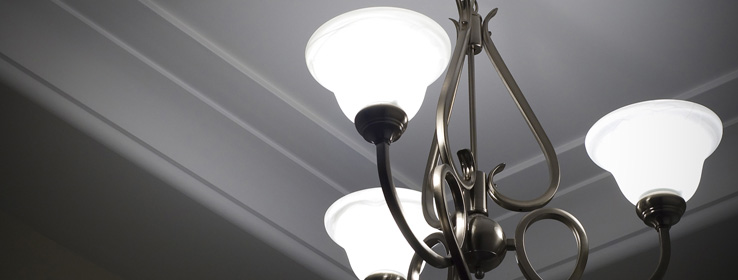With incandescent bulbs on their way out, what lighting options are taking their place?
More than 130 years after Thomas Edison awoke the darkness with his incandescent light bulb, a congressional act will put it to sleep. Starting in 2012, the United States will phase out traditional incandescent light bulbs in favor of more energy-efficient alternatives. All 100-watt bulbs go first, followed by 60- and 40-watts by 2014. The law follows similar measures passed in Latin America, Canada and the European Union.
The switch to more efficient lighting is expected to save consumers $40 billion in energy costs over the next 20 years and cut global-warming emissions by at least 51 million tons of carbon per year, according to the American Council for an Energy-Efficient Economy. While no one argues that energy-efficiency is a bad thing, designers face new challenges when it comes to lighting interior spaces.
The incandescent bulb has long been favored for its color and quality, says Gary Gordon, a New York lighting designer and author of Interior Lighting. "Everyone likes incandescent light simply because the human brain is used to it," he says. "It has a very similar color spectrum to the sun."
But designers will have plenty of alternatives, says Mary Beth Gotti, manager of the Lighting and Electrical Institute at General Electric. "People are going to have more and better solutions, and more exciting lighting effects."
Likely replacements
The most immediate replacement for the incandescent bulb will be some form of halogen light, Gotti says. "It is a crisper white, and still fully dimmable."
But while halogens offer a desirable design alternative, they are still expensive and not as efficient as compact fluorescent lights (CFLs) and LED (light-emitting diode) options.
CFLs use 70 percent to 80 percent less energy than incandescent bulbs. But designers often object to how CFLs affect the color of objects and people. "They make furniture and fabric colors look pale gray or green, and people's skin look sickly," says Gordon.
Fortunately, recent technological advances have improved the quality of CFL color, says Kathy Presciano, an interior and lighting designer and instructor in the School of Architecture and Environmental Design at Kent State University. Still, designers need to be selective and rely on their expertise when using alternatives, she says. "You can't go through a house and replace every light with a CFL. There are times when you need a very focused source."
The best option for creating a bright source of light is probably an LED, Presciano says. "Earlier versions of LED color were on the cool side. But now you have the ability to mix and specify color." (Bulbs are now available in "cool" light, which is good for task lighting, and "warm" light, typically used for accent lighting.)
Lighting fixtures can help redirect and soften light through reflection or refraction, says Presciano. With a very bright LED, for example, "you need to be able to shield and manipulate the quality of light so you're not staring into a big bright light source."
But no fixture can improve a light source's color rendering, Gordon says. "You can change its distribution, but not its color characteristics."
Understanding the numbers
That's why it's important to understand those characteristics, which are measured two ways: Correlated Color Temperature (CCT) and Color Rendering Index (CRI). The CRI, from 0 to 100, represents the quality of light and its ability to render colors correctly. The higher the CRI, the truer the color. (For good color quality, look for a CRI of at least 80.) The CCT measures the relative color appearance of a white light source, and whether it appears more yellow or blue. "Warm" lamps have a lower CCT (2,650 to 3,000), while "cool" lamps have a higher CCT (more than 4,000).
A new initiative by the U.S. Department of Energy is expected to bring more affordable and design-friendly LED options to the market, says Rob Jackson, a lighting consultant in St. Paul, Minn. The "Bright Tomorrow Lighting Prize" or "L Prize" will reward the first manufacturer to design an LED alternative to the incandescent that meets performance, quality and cost expectations.
In the meantime, Presciano urges designers to explore alternatives with an open mind. "Change can challenge a designer's work, but it can also be the gateway to new creative solutions."
Shedding light on the subject
The end of incandescent lighting means designers can't afford to stay in the dark about changing technology. Fortunately, there are many shows and workshops where designers can learn about new products, says lighting designer Kathy Presciano.
She recommends LightFair International, an annual architectural and commercial lighting trade show. (LightFair 2011 is scheduled for May 17-19, 2011, in Philadelphia. For information, visit lightfair.com .)
Look, too, for local seminars, says Jackson, who has been offering LED "Lunch and Learns" to design professionals. "We talk about the limitations of what's out there now – and tell them what they can look forward to."










